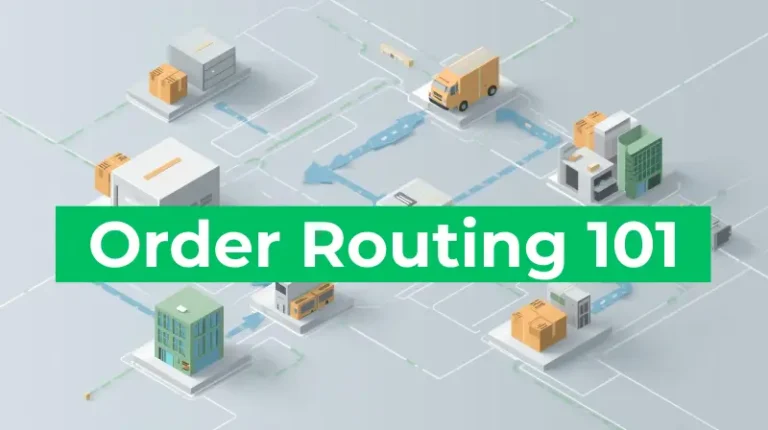New 2025 UPS Surcharges to Impact Large Bulky Packages, Fuel Fees, and More

Last updated on June 09, 2025

Brace yourselves, ecommerce pros: UPS is rolling out a fresh batch of surcharges in 2025 that could make your shipping invoices feel like a game of financial Jenga. From fuel fees to oversized package penalties, here’s the lowdown on what’s changing and how you can navigate the storm without capsizing your margins.
The Surcharge Symphony: What’s New?
1. Fuel Surcharge Hike
Starting May 26, 2025, UPS increased its fuel surcharge calculations for ground, air, and Ground Saver packages. This means that as fuel prices fluctuate, so will your shipping costs, adding a layer of unpredictability to your logistics budget. Supply Chain Dive
2. Delivery Area Surcharge (DAS) Expansion
Effective June 1, 2025, UPS updated the list of ZIP codes subject to Delivery Area Surcharges. If you’re shipping to newly added areas, expect additional fees per package. Supply Chain Dive
3. Remote Area Surcharge for Ground Saver Deliveries
From June 2, 2025, Ground Saver deliveries to ZIP codes deemed as remote areas in the contiguous U.S. will incur additional fees. Supply Chain Dive
4. Additional Handling and Large Package Surcharges
Also starting June 2, 2025, higher fees for shipments in Zone 7 and above have been implemented. If you’re shipping large or heavy items over long distances, these surcharges could significantly impact your costs. Supply Chain Dive
5. Redefinition of Large Package and Additional Handling Charges
Effective August 17, 2025, UPS is changing how it calculates these surcharges. Instead of using length plus girth, the new criteria are:
- Large Package Surcharge: Applies to packages weighing over 110 pounds or with a size greater than 17,280 cubic inches.
- Additional Handling Charge: Applies to packages with a size greater than 8,640 cubic inches.
6. International Collect on Delivery (ICOD) Fee
- As of June 2, 2025, a new $12 fee applies to U.S. consignees receiving international shipments where duties and taxes aren’t prepaid or billed to a UPS account. Pre-paying duties and taxes electronically before delivery can help you avoid this fee. Supply Chain Dive
Slash Your Fulfillment Costs by Up to 30%
Cut shipping expenses by 30% and boost profit with Cahoot's AI-optimized fulfillment services and modern tech —no overheads and no humans required!
I'm Interested in Saving Time and MoneyReal-World Impacts: What This Means for You
Ecommerce Retailers
If you’re selling bulky items like furniture or gym equipment, these changes could hit hard. The new dimensional thresholds mean that even if your package isn’t heavy, its size alone could trigger hefty surcharges.
SMBs (Small and Medium-sized Businesses)
With tighter margins, SMBs may feel the pinch more acutely. The expanded DAS and remote area surcharges could make shipping to certain customers less profitable, potentially forcing tough decisions about service areas.
International Shippers
The new ICOD fee adds another layer of cost to international shipments. Ensuring duties and taxes are prepaid or billed to a UPS account can help avoid this fee, but it requires diligent coordination.
Strategies to Mitigate the Impact
1. Optimize Packaging
Review your packaging to ensure it’s as compact as possible without compromising product safety. Reducing package size can help you stay below the new dimensional thresholds and avoid additional surcharges.
2. Audit Shipping Zones
Analyze your shipping destinations to identify if the updated DAS and remote area surcharges affect your common delivery areas. Consider alternative carriers or fulfillment centers closer to these zones to reduce costs. Diversifying your shipping partners can provide more flexibility and cost savings.
3. Distribute Inventory Strategically
Consider spreading your inventory across multiple fulfillment centers or 3PLs closer to where your customers live. This approach isn’t just about faster delivery, it’s about shrinking the distance a package travels in the final mile, which mitigates the impact of several of these new surcharges. Plus, you’ll be better positioned to offer faster, cheaper shipping options to your customers: win-win!
Compare rates with other carriers, especially for shipments that now incur higher UPS surcharges. Diversifying your shipping partners can provide more flexibility and cost savings.
4. Prepay Duties and Taxes
For international shipments, prepaying duties and taxes or billing them to a UPS account can help you avoid the $12 ICOD fee. Implement processes to ensure this is done consistently.
5. Leverage Technology
Use shipping software to automatically calculate the most cost-effective shipping options based on package size, weight, and destination. This can help you make informed decisions quickly.
Looking for a New 3PL? Start with this Free RFP Template
Cut weeks off your selection process. Avoid pitfalls. Get the only 3PL RFP checklist built for ecommerce brands, absolutely free.
Get My Free 3PL RFPLooking Ahead
UPS’s 2025 mid-year surcharge updates reflect the company’s response to rising operational costs and the need to manage delivery complexities. While these changes present challenges, proactive planning and strategic adjustments can help mitigate their impact. Stay informed, adapt your shipping strategies, and consider consulting with logistics experts to navigate this evolving landscape effectively.
Note: For the most current information on UPS surcharges and fees, please refer to the official UPS website or consult with your UPS account representative.

Turn Returns Into New Revenue


 4 minutes
4 minutes


